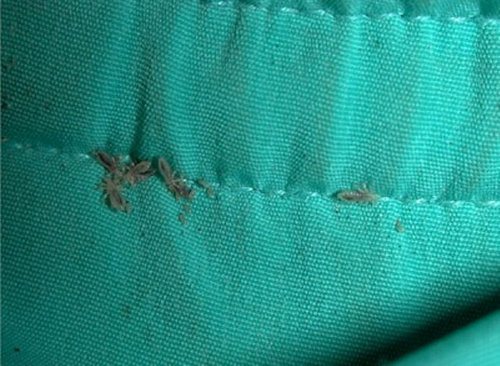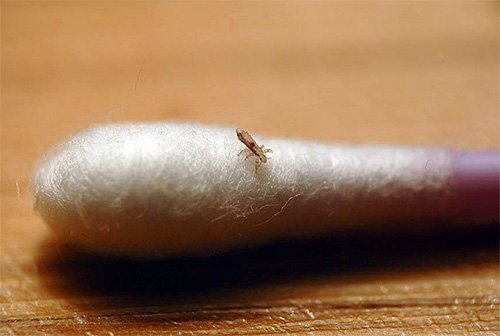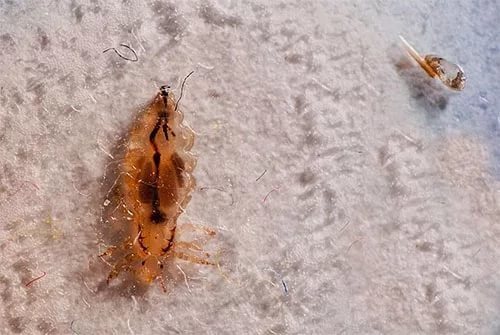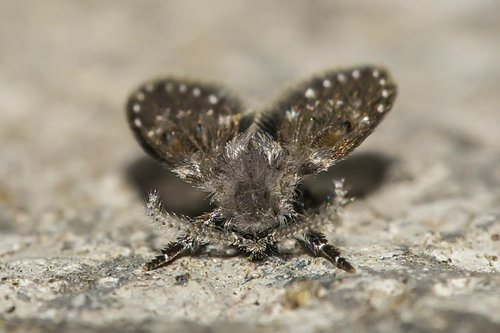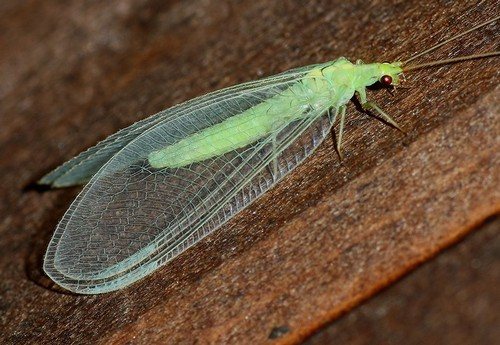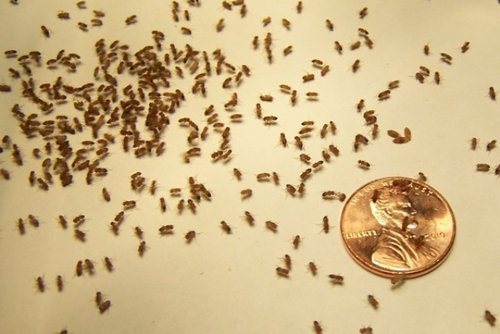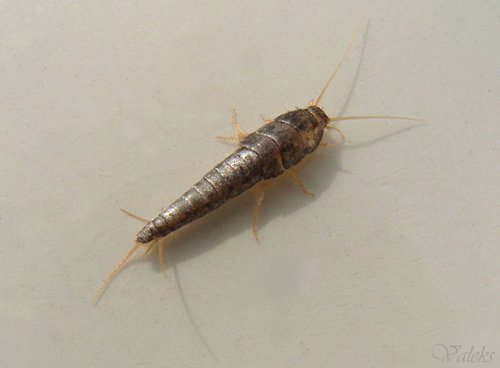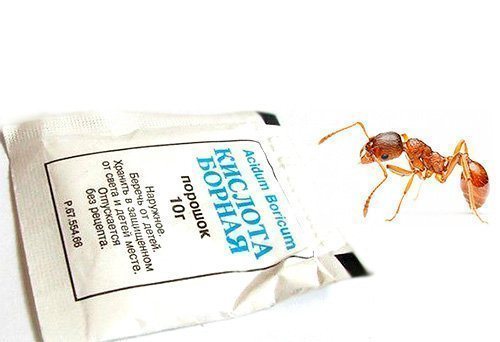The linen louse is a subspecies of head lice. These are insects that parasitize a person, thereby causing him incredible discomfort. In scientific reference books they are called body lice; their less common name is bed lice.

As the name suggests, this parasitic insect, unlike head lice, lives on household textiles - bedding - and human clothing. Linen lice are not adapted to living in hair in the same way as their counterparts, head lice, are, but contact with them is no less painful. The appearance of these parasites in your home will require your immediate response.
Linen (body) louse and its features
The linen louse is a small insect, approximately 4-5 millimeters in length. Females are larger than males. This insect has a transparent light color, sometimes light yellow, sometimes light gray. A louse that has eaten can be recognized by a translucent drop of blood in the area of its tail. It is not able to stay on human skin or slippery hair, so it chooses bedding and clothing as its habitat.
Upon contact with the human body, the parasite crawls onto the human skin, where it sucks blood, and then returns to clothing. During the day, the insect spends only a few minutes in direct contact with the human body; this is enough to meet its nutritional needs for full life.The rest of the time, the parasite lives in the folds of a person’s clothing, mainly in hard-to-reach places: seams, folds at the collar, belt, stockings, cuffs, etc.
Parasite bites on human skin cause irritation, scabies, suppuration and many other unpleasant sensations. With prolonged scratching of the affected areas, a person may develop furunculosis. Needless to say, how much the mood deteriorates when these “comrades” settle in. Due to continuous itching and scratching, sleep is disturbed and appetite disappears. In addition, linen lice can carry dangerous infectious diseases such as typhus and fever.
It is difficult to detect a linen louse on clothes, because it is inconspicuous in appearance and hides deep in the clothes.
The linen louse has a huge potential for reproduction. The female insect lays dozens of eggs every day. The testicles stick to the fibers of clothing due to their natural stickiness, and in a few days they develop into a larva and a full-fledged individual, gaining the opportunity to also reproduce. Thus, the number of insects in an environment favorable to them will grow by leaps and bounds. It is estimated that during a life cycle of 30-35 days, a female linen louse lays 300-400 larvae.
The linen louse is very hardy; in the absence of contact with humans, its vital activity slows down, thus the insect does not suffer from hunger. The insect can survive in an open environment for quite a long time. The linen louse can live in water for up to two days and swims well.
And, nevertheless, in the active phase, linen lice are quite demanding; to reproduce, they need heat from 30 degrees and humidity, for this reason, the main risk group for infection with these parasites are people who neglect the rules of hygiene and changing their linen.
The linen louse prefers natural fabrics, cotton, linen, which smell better. But silk, smooth fabrics are not favored by this insect, since it is difficult to gain a foothold on them. Carpets and fabric covers on pieces of furniture are also practically not used as a habitat; under these conditions, the linen louse has no opportunity for constant contact with humans, and therefore for feeding.
Risk factors
As noted above, first of all, the carriers and transmitters of linen lice are marginal and asocial segments of the population, especially homeless people who do not wash for a long time and do not change their clothes.
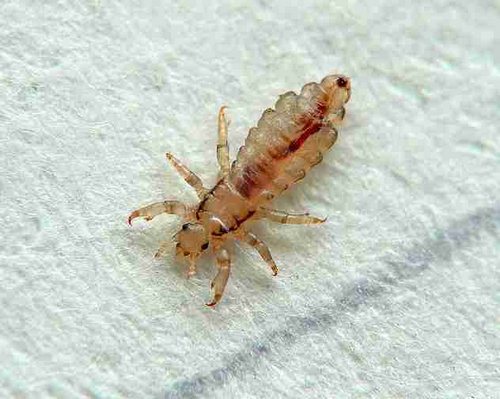
But even if your home is exceptionally sterile, clean, all clothes are washed regularly, and all hygiene requirements are met, it is, unfortunately, almost impossible to completely eliminate the infestation of you or your family members with linen lice.
You can bring them home:
- from crowded public transport or other crowded places, parasites easily crawl from an infected person to an uninfected person, even with short-term contact. Parasites could simply remain on the seat on the bus after the previous passenger and find a new “home” on your clothes;
- from a clothing store, parasites could “linger” in it after it was tried on by an infected customer;
- from a vacation or business trip when visiting hotels and trains, where even in clean bed linen, but which had not undergone the necessary sanitary treatment after possible infection, there could be individual linen lice.
For this reason, you should be wary of purchases in mass second-hand stores, spontaneous sales, and large clothing markets. In addition, it is extremely undesirable to use other people's clothes or towels, or give other people items of your wardrobe.
To avoid infection with body lice, you must carefully follow all hygiene rules:
- wash regularly in hot water;
- wash clothes and bedding at high temperatures;
- Iron all clothing and bedding before use.
These methods of prevention will cost much less than treatment.
Ways to combat parasites
If the precautions taken did not help, and parasites still appear in your home, then the following methods can be used to combat them.
- Boil all clothing and bedding, using chlorine if possible. Then dry well in the sun for at least 4-5 days, and then iron all clothes using steam. If boiling is unacceptable for your wardrobe item, then washing at high temperature followed by drying and steaming is suitable. Items that cannot be boiled or washed at high temperatures must be subjected to chemical treatment, see below.
- Freeze clothes and linen for a period of three days, then wash, dry thoroughly and iron using steam.
- If possible, throw away contaminated items completely.
- For destruction with powder, “Methylacetophost” or “Pyrethrum” is widely recommended in concentrations according to the instructions on the package. When using this method, clothes and linen are sprinkled with powder, placed in a tightly closed bag for a period of two hours, and then hung out to air for several days.
- To destroy linen lice, you can also use a 20% kerasin-soap emulsion, in which the infected items should be soaked for two hours, and then washed, dried, ironed and steamed.
- Among other things, it is necessary to disinfect upholstered furniture in the house with any insecticidal agent that can be purchased at a pharmacy and used according to the instructions.
- Despite the fact that the parasite’s habitat is clothing, if infected, it is necessary to thoroughly treat the entire body with anti-pediculus drugs, which are sold in pharmacies. Some insects may be on the human body, and disinfection is necessary in order to avoid re-infection. For the same reason, all people living in the same place must undergo disinfection at the same time, including those who have not yet shown signs of infection.
When fighting body lice, it should be taken into account that the egg (nit) of this parasite lives up to 7 days; for this reason, treated items cannot be used immediately after treatment. You need to wait until the parasites are completely eradicated.

